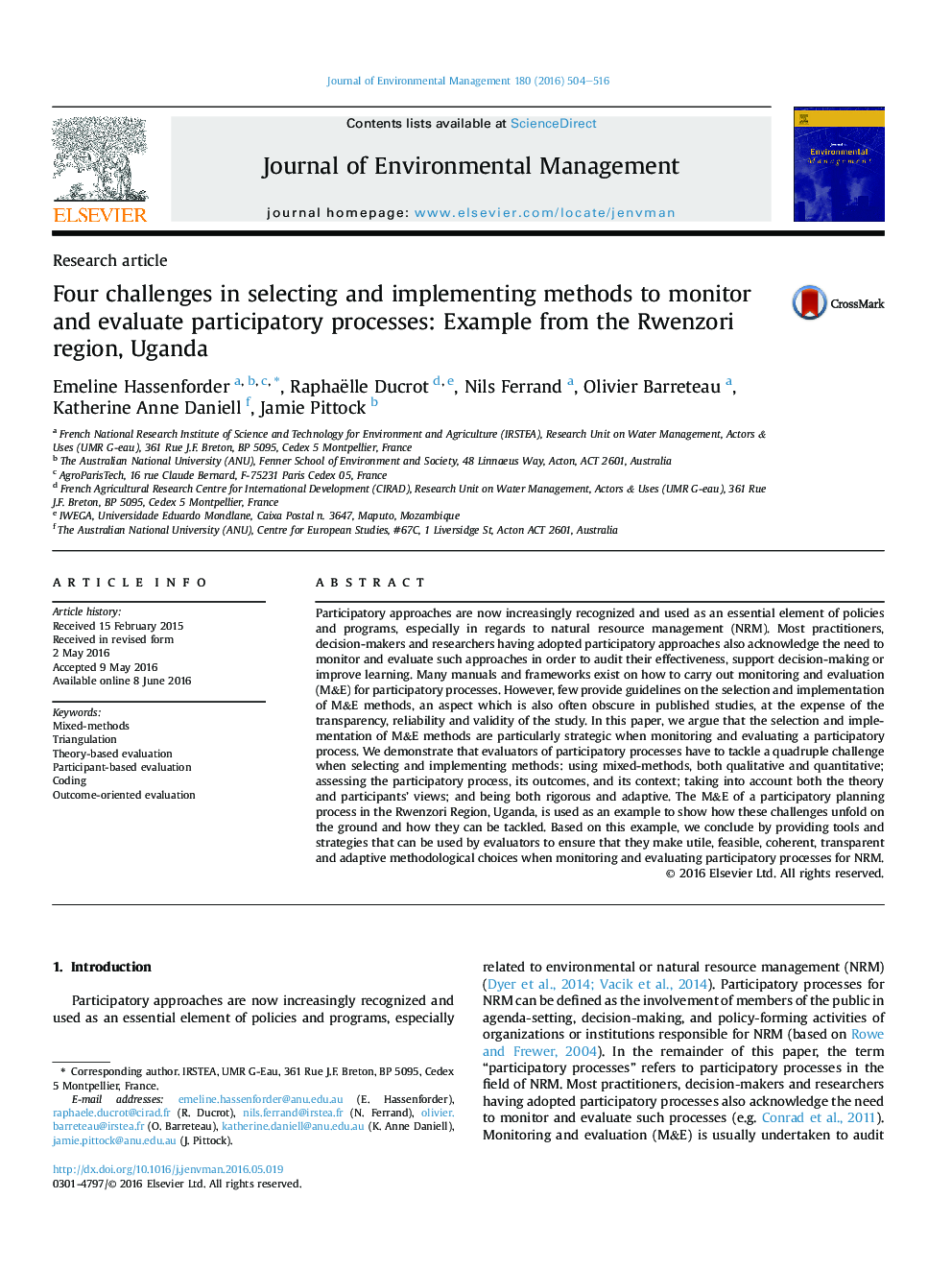| Article ID | Journal | Published Year | Pages | File Type |
|---|---|---|---|---|
| 7480251 | Journal of Environmental Management | 2016 | 13 Pages |
Abstract
Participatory approaches are now increasingly recognized and used as an essential element of policies and programs, especially in regards to natural resource management (NRM). Most practitioners, decision-makers and researchers having adopted participatory approaches also acknowledge the need to monitor and evaluate such approaches in order to audit their effectiveness, support decision-making or improve learning. Many manuals and frameworks exist on how to carry out monitoring and evaluation (M&E) for participatory processes. However, few provide guidelines on the selection and implementation of M&E methods, an aspect which is also often obscure in published studies, at the expense of the transparency, reliability and validity of the study. In this paper, we argue that the selection and implementation of M&E methods are particularly strategic when monitoring and evaluating a participatory process. We demonstrate that evaluators of participatory processes have to tackle a quadruple challenge when selecting and implementing methods: using mixed-methods, both qualitative and quantitative; assessing the participatory process, its outcomes, and its context; taking into account both the theory and participants' views; and being both rigorous and adaptive. The M&E of a participatory planning process in the Rwenzori Region, Uganda, is used as an example to show how these challenges unfold on the ground and how they can be tackled. Based on this example, we conclude by providing tools and strategies that can be used by evaluators to ensure that they make utile, feasible, coherent, transparent and adaptive methodological choices when monitoring and evaluating participatory processes for NRM.
Related Topics
Physical Sciences and Engineering
Energy
Renewable Energy, Sustainability and the Environment
Authors
Emeline Hassenforder, Raphaëlle Ducrot, Nils Ferrand, Olivier Barreteau, Katherine Anne Daniell, Jamie Pittock,
